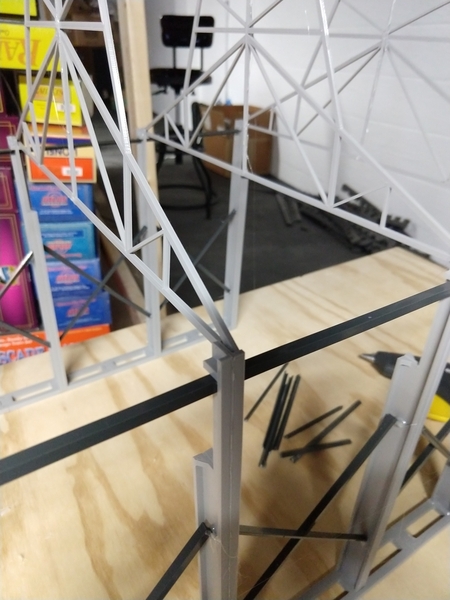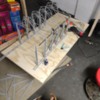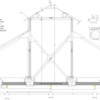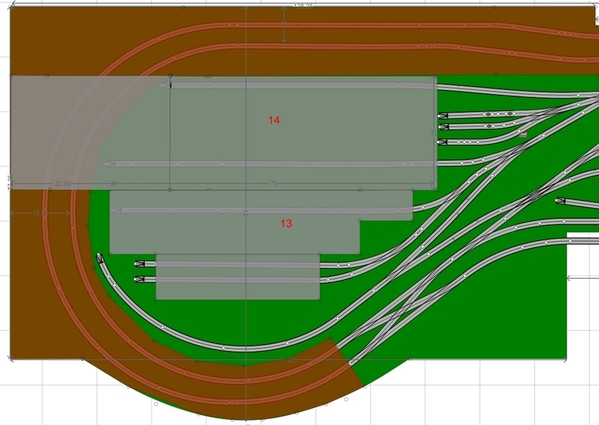Progress is rolling along. I'll be glad when there is actual scenery and what I perceive as exciting things to share.
I rearranged the entire corner of the basement. I built shelves there before I decided to get back into model railroading. They had to go if the Norgeville Iron Works is going to graduate from a merchant iron company to a steel company. The open hearth will go in that in end of the layout. This was tedious. It involved emptying the shelf, battling two wolf spiders while moving the shelf, discovering water damage, and fixing the water damage. I went through the stuff on the shelf since it was from college. I cut 5 boxes down to 1. So this was a good thing overall. I now need to put up the last 8 studs along the wall for the backdrop, and then I'm ready to paint the ceiling.
I am very nervous about painting the ceiling. I have a spray gun to paint it black but I just have zero confidence that I'll get the ceiling clean enough to cover everything. I hope I'm wrong and it's much easier but I just thought this is going to be a very tricky project. My current plan is to use compressed air to dislodge the dust (vacuum in hand so I don't relocate the dust). Then wipe with water. Let dry three days with the dehumidifier running.
I also inventoried all the track I've been purchasing as I go along. If I find a good deal, I scoop it up. The top level (steel area) is supposed to be roughly 590' total. I feel like that's cheating a bit because most of that is yard and siding. The mainline is a double loop stretching 37'. It's funny to think I originally hated that my basement was L shaped when I bought the place. Now it has been a huge advantage. So hopefully Santa can bypass the ports and bring some track this winter.
In addition to track, I've been working on operations. I came up with a spreadsheet with a lot of items I think will need moved around the layout. They're mostly general: coal, iron ore, liquid iron, liquid steel, waste, goods, ingots, etc. A mill needs gloves and uniforms but that would fall under goods. So with that, I've been working out how many units of those items are needed and how many a car represents. That way I can start working out a rough schedule for trains to give them purpose.
I'm starting to think harder about my bench work. My aim is to make the layout able to be moved with reasonable ease. Currently, I have the bench work designed in 2'x4' sections made from plywood of undermined thickness and 1"x3" boards. I'm not planning to climb on the layout because the top level is 48" off the ground and I don't have very high ceilings. It's going to be a top side creeper and access holes if I need to grab anything far off the layout. I'm just not sure how well the design will work bolting together multiple 2'x4' panels. I might have some longer pieces where needed. We'll see. I need to start reading on this. Particularly because I never messed with a two level layout and I better be finding a way to support that top level. This is part of the reason I put studs up. Hopefully I can use them to hold parts of the layout up.
So that's been about it. Not overly exciting but I want to make sure I do some kind of documenting in this thread. I haven't done much high dollar stuff because the bank account is light this time of year and the car needed unexpected attention. It's mostly been planning and figuring since that doesn't cost anything. I already had the studs. I already have the spray gun. I'll need to buy paint next but I'll find some money for that. Hopefully in the next post I can show a picture of a black ceiling!
























